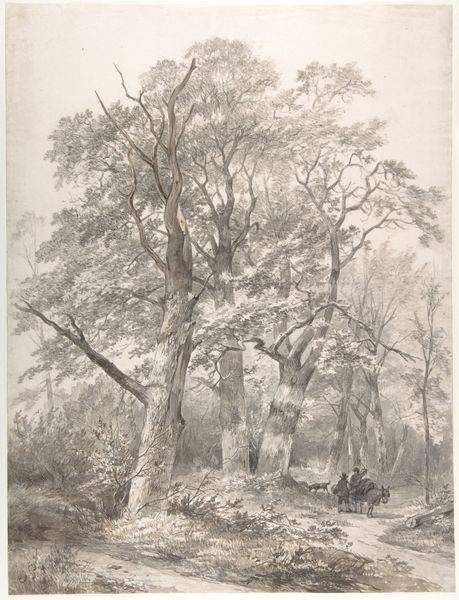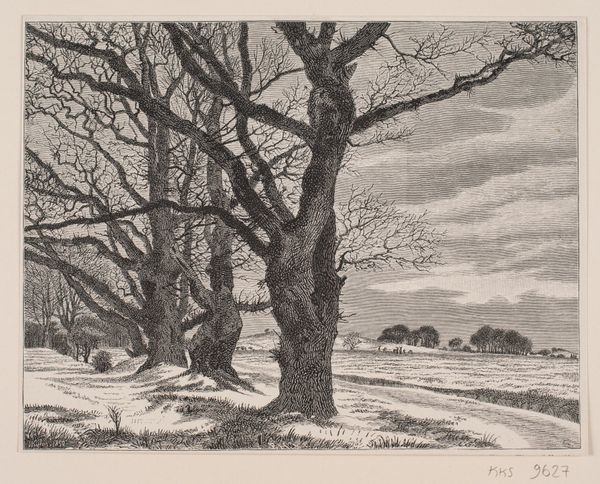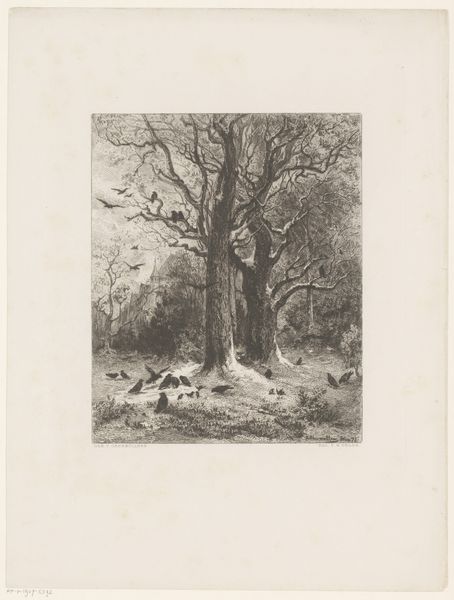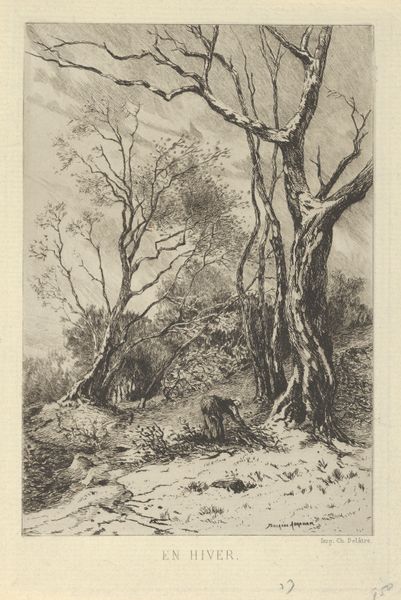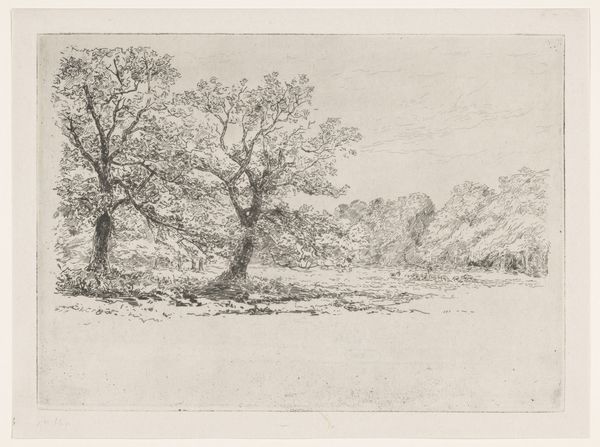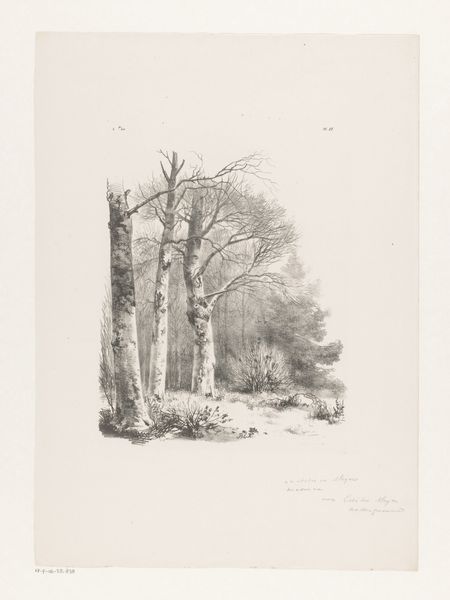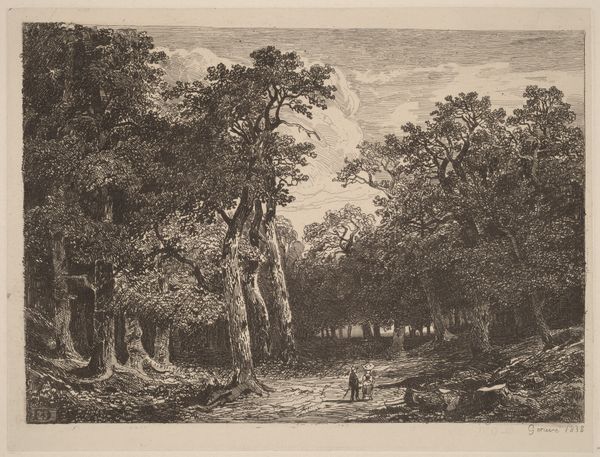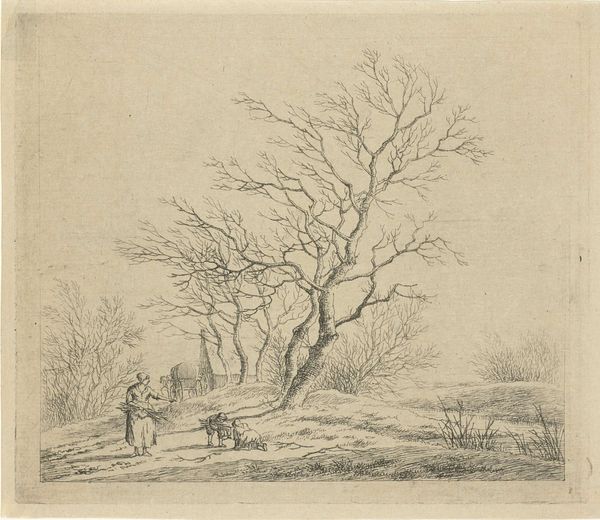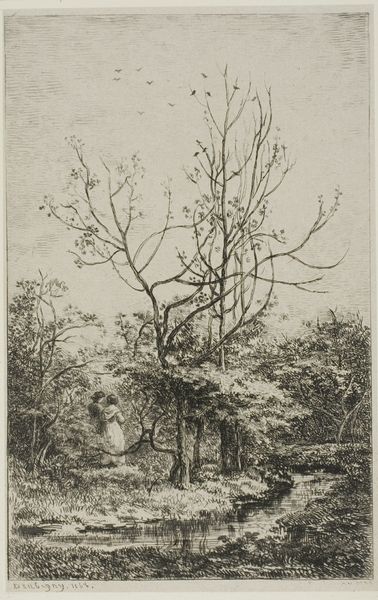
print, etching
# print
#
etching
#
landscape
#
pencil drawing
#
romanticism
#
realism
Dimensions: height 286 mm, width 250 mm
Copyright: Rijks Museum: Open Domain
Remigius Adrianus Haanen made this winter landscape using etching; a printmaking technique that uses acid to corrode the unprotected parts of a metal surface to create a design. Haanen lived and worked in the Netherlands in the 19th century, a time when Dutch art began to look back at the landscapes of the Golden Age. His work fits into a well-established tradition of winter landscapes, yet it departs from it in ways that reveal a modern sensibility. Here, he presents a serene scene of everyday life, a mother and child walking along a snow-covered path. The bare trees and muted tones create a sense of stillness, but the presence of people suggests a connection to the world beyond the canvas. This focus on ordinary life reflects a broader trend in 19th-century art toward realism and an interest in capturing the experiences of common people. The meaning of art is contingent on social and institutional context, so to understand this work better, you might research the art market for etchings in the Netherlands in the 1800s.
Comments
No comments
Be the first to comment and join the conversation on the ultimate creative platform.
